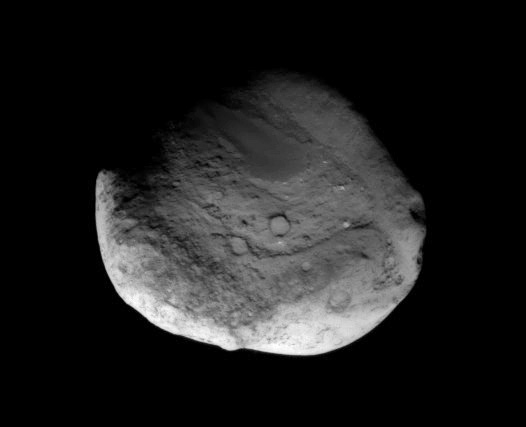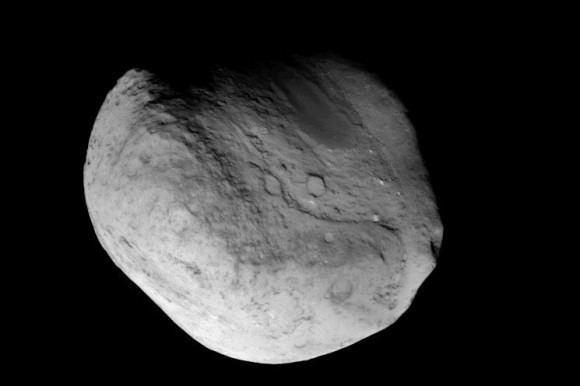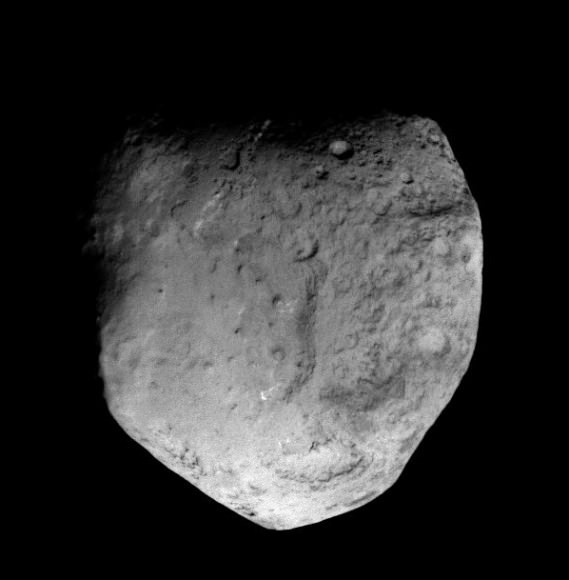NASA’s Stardust-NExT raced past Comet Tempel 1 overnight Feb 14/15 at over 10 km/sec or 24,000 MPH and is now sending back the 72 astoundingly detailed and crisp science images of Comet Tempel 1 taken during closest approach at 11:37 p.m. EST on Feb. 14.
The high resolution images are amazingly sharp and clearly show a pockmarked and crater rich terrain of both new and previously unseen territory on the icy comets surface. The Stardust-NExT comet chaser zoomed within 181 km (112 miles) of the nucleus of the volatile comet.
See the photo gallery above and below, which is being updated as the images come back. I am enhancing and brightening certain images to show further details. The new images of Tempel 1 from Stardust-NExT surpass my expectations and look even sharper then those taken by NASA’s Deep Impact comet smasher in July 2005.
Read more about the Stardust-NExT Flyby and mission in my earlier stories here, here and here
NASA news briefing on Stardust-NExT at 3:30 p.m Feb 15 live on NASA TV
Update: Read my follow up story on the discovery of the Deep Impact crater here
Photo gallery of Comet Tempel 1 images from NASA’s Stardust-NExT comet mission on Feb 14, 2011

Image brightened and enhanced to show additional detail.

Image brightened and enhanced to show additional detail.

Image brightened and enhanced to show additional detail.


Image brightened and enhanced to show additional detail.
Images brightened and enhanced to show additional detail by Ken Kremer


What happened to the impact crater?
I don’t think they were one-hundred-percent certain whether they would be able to see the crater. They might have missed it, with crater on the other side; or they crater might have been covered up. I’m not saying it is, but just stating some of the possibilities.
The crater is muted at best, but its there….
other surface changes noted were VERY interesting!
The article describes the “icy comets surface” (sic). Not only is ice mostly not evident in the probe photos, we can take the word of the Deep Impact team. Less than one half of one percent of the Tempel 1 surface is covered by water ice (with no other frozen volatiles evident) according the principal investigators’ report. It is a supposition of this team that significant ice must lie below this rocky surface.
This comet is a rock, I say.
I would however be interested in trajectory data and the resulting calculated average density of the comet. Around 5 g/cc I’ll bet. I have seen figures of .6 g/cc but that I believe is based on the assumption of a rubble pile’s density (a guess). The Deep Impact site says we don’t know the mass.
I am just wondering, when the comet gets close enough to the sun, could you not have water lakes for a short period?
I think you would see any melted water rapidly sublimate, given the near-vacuum.
If there was any significant surface H20 on this comet, it’s almost all gone.
Excuse me – my bad terminology. The liquid would evaporate quickly. If there were sufficient sunlight to cause melting it would also cause sublimation of some of the ice.
When I saw this image the first thought that come to my mind was “this looks like Deimos or Phobos, one of the Mars satellites”.
Don’t you think so?
Maybe two small Mars satellites are former comets, somehow captured by Mars?
Composition is far more telling than appearance. I’m not sure how (or if) the compositions compare, but the similarity in appearance counts for virtually nothing in today’s exploration of solar system bodies. Composition is where it’s at.
” …even sharper then those taken …” Hopefully just a slip of the finger, or can we look forward to ‘alot’ next?
Here is an artikel on jpl about the impact crater
What are the white spots?
Hey Dumb! I had exactly the same thought. Physically, they could be different sides of the same thing. If Mars is a failed inner planet which moved out of the accretion area too early, then it certainly could have taken some later comers with it. Science likes to make all these distinctions about comet vs asteroid vs Oort cloud body vs trans Neptunian but I’m more of the opinion that nothing is as simple as it looks and there has been a lot (or alot) of mixing since the beginning of our solar system.